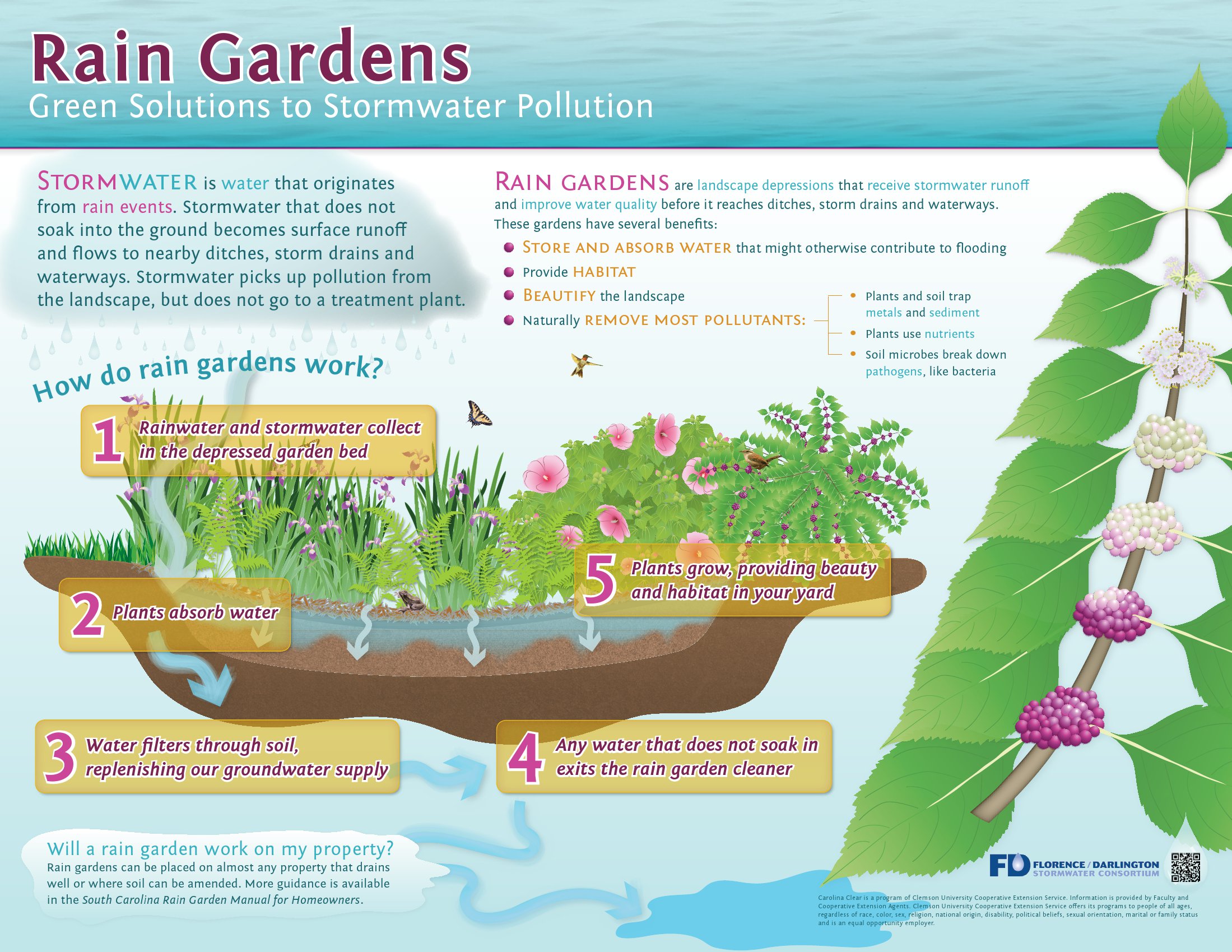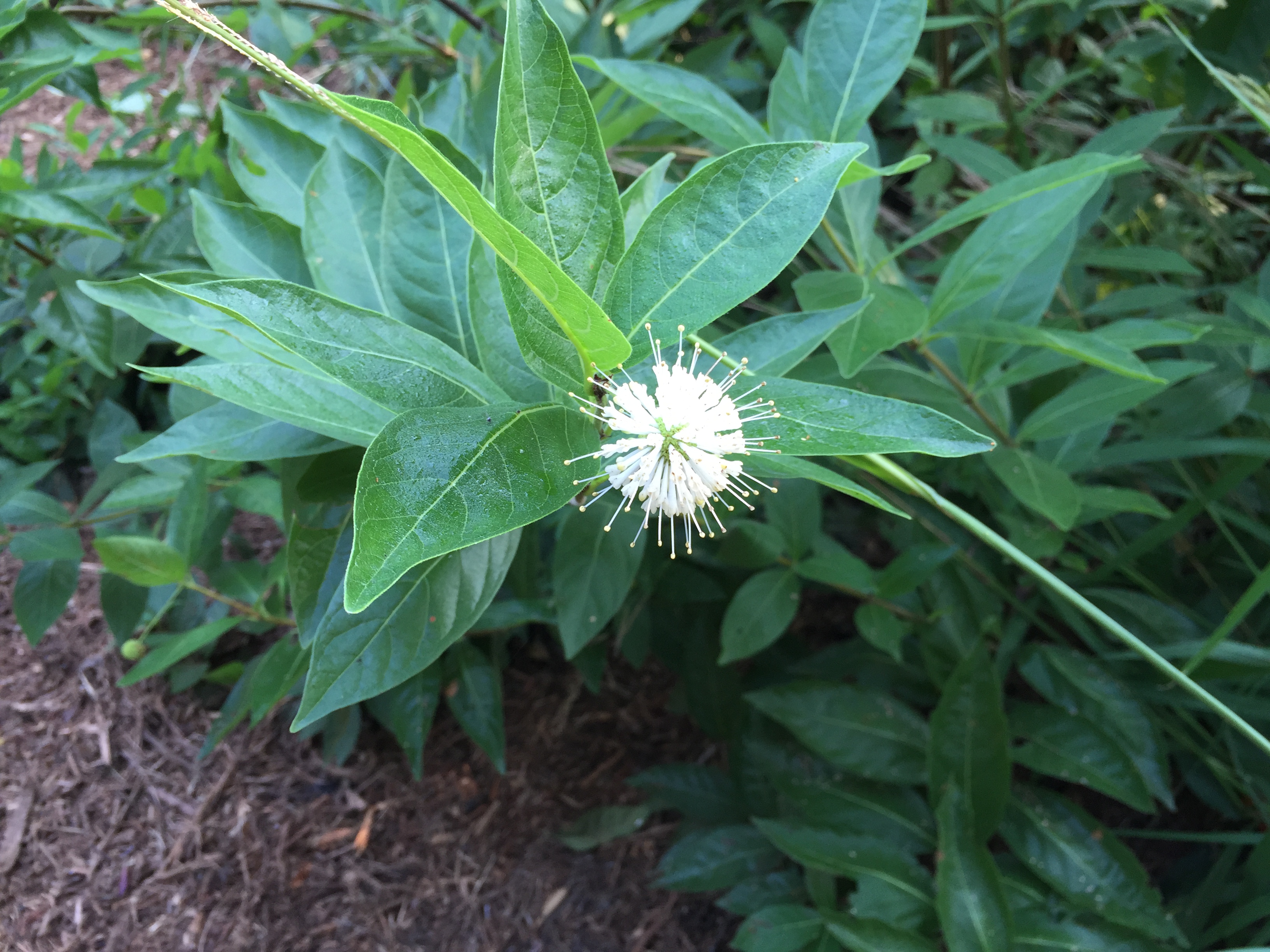A rain garden is a great way to temporarily capture and clean storm runoff before it gets to our waterways. It is good for the environment and can be an attractive part of the landscape.

Lisa Swanger of Coastal Carolina University describes a rain garden as “a landscaped depression, essentially bowl shaped, that is used to capture storm water run off… which is essentially the water that flows across the land following a rain event… and it allows it to slowly soak into the ground”.
A rain garden should be situated between where the water is coming from and where it exits your yard, so the water from your downspouts or driveway flows into the rain garden before flowing into a drainage ditch.

As that runoff flows across the land, it picks up various pollutants along the way. Such as excess nutrients from fertilizer, or pet waste. Rain gardens give us the opportunity to capture some of that storm water runoff and treat it before it enters our storm drains and eventually flows into our local waterways including rivers and our beaches.
When constructing a rain garden, first conduct a “perc test” to make sure the soil will drain. We don’t want to create a wetland, with standing water all the time. A rain garden must be at least ten feet away from a building, and can be placed in either sun or shade, but sun offers a larger plant selection. The size of a rin garden depends on the amount of runoff being treated/captured. A typical residential rain garden might range from 50 to 100 square feet.
There are many attractive plants that will thrive in a rain garden, but they need to be able to tolerate wet conditons, when the garden is flooded after a rain, and they need to be able to handle long stretches of dry weather as well.

Rain gardens help to beautify our landscape. It provides a great habitat for wildlife, such as birds and butterflies. It also in another way helps to reduce or prevent the chances for flooding, and helps to recharge our ground water supply.
After a rain, the water in a rain garden will slowly soak into the ground, and there will not be standing water left behind… so rain gardens are not a mosquito breeding ground.

When choosing plants for the rain garden, you want to choose ones that can tolerate both wet and dry conditions (generally rain gardens are not irrigated except to get the plants established). Perennials, grasses, and even shrubs do well in a rain garden, and native plants may be better suited to environmental conditions. Some plants that work well in a rain garden are buttonbush, river oats, and marshmallow hibiscus.



